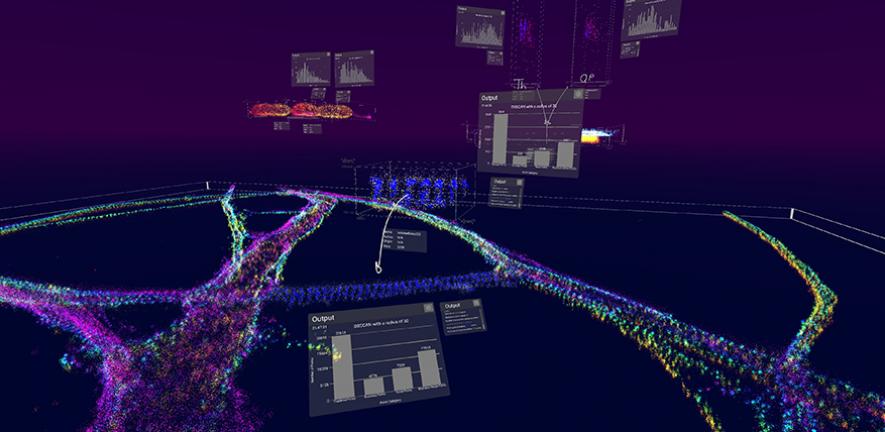Please check the information entered!
- Please check the information entered
A log-in email has been sent to your email address
Forgot password? Reset password
Researchers from the University of Cambridge* have collaborated with 3D image analysis software company Lume VR Ltd** to create Virtual Reality (VR) software that allows scientists to ‘walk’ inside cells.
Dubbed vLUME, the software takes super-high-resolution microscope scans and transforms them into virtual 3D worlds. Scientists can then navigate these creations using a virtual reality headset and dive into the internal structures of a human cell.
The Google Street View-style solution can be used to study everything from individual proteins to entire cells, allowing scientists to see where things go wrong when they go wrong. The software also enables scientist to rewind biological processes by looking through recorded and visualized datasets. The hope is that this unprecedented insight into cells will lead to new treatments for diseases.
In addition, vLUME enables researchers to share their work with other collaborators, using built-in image and video recording features.
Speaking about the breakthrough, Steven Lee, a research team leader in Cambridge's department of chemistry, said: “Biology occurs in 3D, but up until now it has been difficult to interact with the data on a 2D computer screen in an intuitive and immersive way. It wasn't until we started seeing our data in virtual reality that everything clicked into place”.
The fundamental technology behind vLUME, super-resolution microscopy, was awarded the Nobel Prize for Chemistry in 2014***. It makes it possible to obtain images that have resolutions higher than those imposed by the diffraction limit, which is due to the diffraction of light. Until now though, there hasn’t been an intuitive way to visualise and analyse this data in three dimensions; that’s where vLUME comes in.
Viewing data in this way can stimulate new initiatives and ideas, as Anoushka Handa — a PhD student from Lee's group — discovered. She used vLUME to image an immune cell taken from her own blood. She then stood inside it de her own cell in virtual reality. “It's incredible — it gives you an entirely different perspective on your work,” she said.
More details about vLUME are published in the journal Nature Methods****.
* https://www.cam.ac.uk/research/news/new-virtual-reality-software-allows-scientists-to-walk-inside-cells
** https://www.lumevr.com/
*** https://www.nobelprize.org/prizes/chemistry/2014/press-release/
**** https://www.nature.com/articles/s41592-020-0962-1

Image credit: Alexandre Kitching / University of Cambridge